This fun parachute egg drop experiment is a great demonstration of the forces acting on parachutes. If you drop something, it falls to the ground. This is because it is pulled by the gravity of the Earth. You’ll notice that some things drop faster than others. This is because of air resistance. Try dropping a piece of paper and a lego brick. Which drops the fastest?
We are going to try dropping an egg on its own, dropping an egg attached to a parachute and an egg in a basket under a balloon.
Egg Drop Experiment
How to make an egg parachute
What you need to make a parachute
- Bin bag/ plastic sheet/paper or other flat material.
- 4 pieces of string
- sellotape or masking tape
- 3 eggs ( we boiled ours )
Parachute Instructions
- Lay the bin bag out flat and cut out a big square.
- Make a hole in each corner, thread a piece of string through it and tie a knot.
- Tie all 4 pieces of string together and sellotape the egg to the bottom
Make Your Own Air Balloon
Air Balloon Materials
- Cardboard made into a basket shape or a small plastic container
- Balloon blown up
- 4 pieces of String
Air Balloon Instructions
- Sellotape some string to your balloon and attach the basket.
- Place the egg in the basket
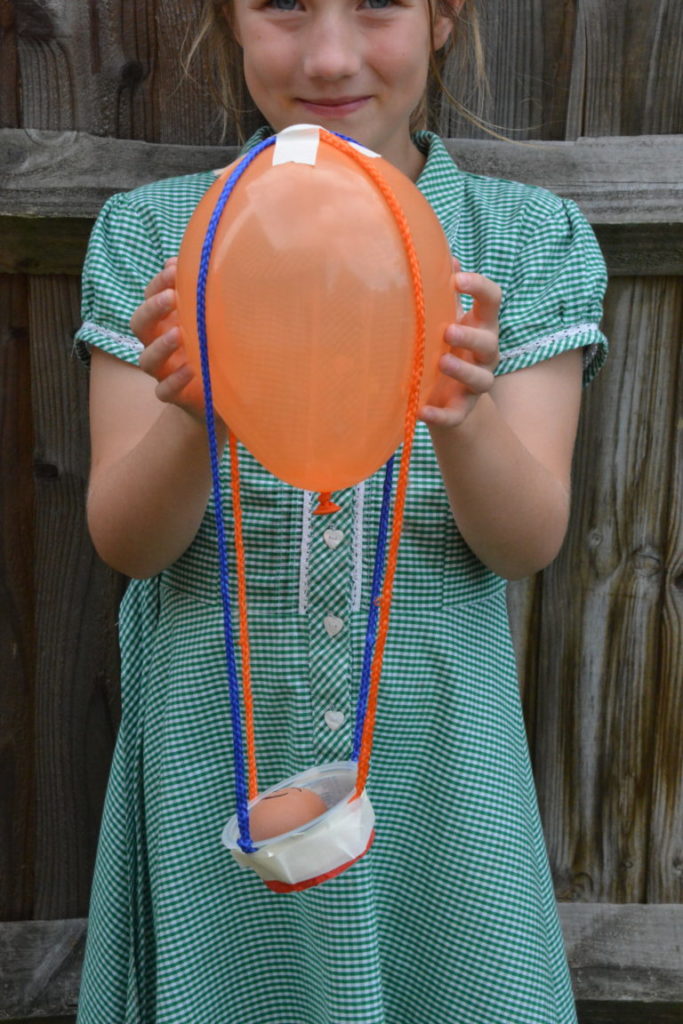
Drop an egg on its own, the egg in the basket and the egg in the parachute from somewhere high up. Make sure an adult is around to help with this part.
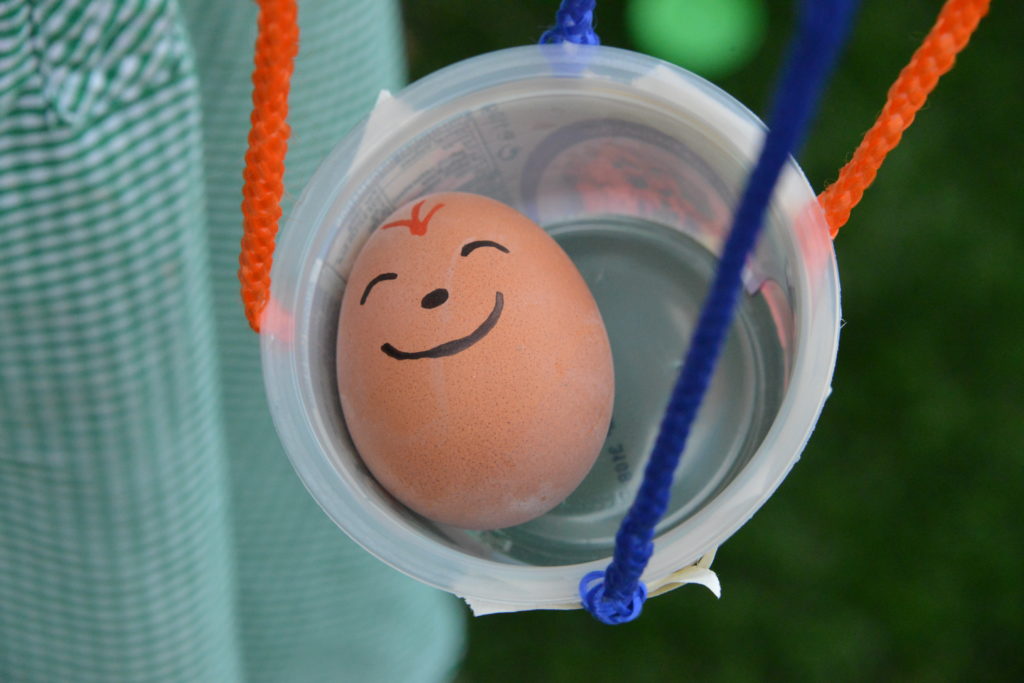
Gravity and Air Resistance Explained
If you tried dropping paper and a lego brick or similar, the paper should have dropped to the floor more slowly than the brick. This is because the paper has a larger surface area, so has to push against more air as it drops, which means the air resistance is greater, and it drops more slowly.
An egg dropped without anything to slow it down will fall fast and break; the parachute and balloon add air resistance, slowing the fall and stopping the egg from breaking.
We also found that the parachute fell much more slowly than the balloon. This is because the parachute has a larger surface area than the balloon, and so slows the descent of the egg more.
If we dropped a hammer and a feather, we would expect the hammer to fall fastest; however, if we did this on the moon where there is no air resistance, they would hit the ground at the same time!
How do Parachutes Work?
As we explained above, two forces act on an object as it falls. Gravity pulls the object down, and air resistance slows the fall.
Parachutes are used to slow the fall of an object by increasing air resistance which reduces the effect of gravity!
More parachute investigation Ideas
Record the time taken for all three to drop and see how much slower the parachute is.
Try our experiments you can make fly.
Experiment with different sizes of parachutes and see which drops more slowly.
Don’t forget to try our collection of easy ideas for learning about forces too.
In This IS Rocket Science we made parachutes with coffee filters which was great fun and you can experiment with different sizes and shapes.
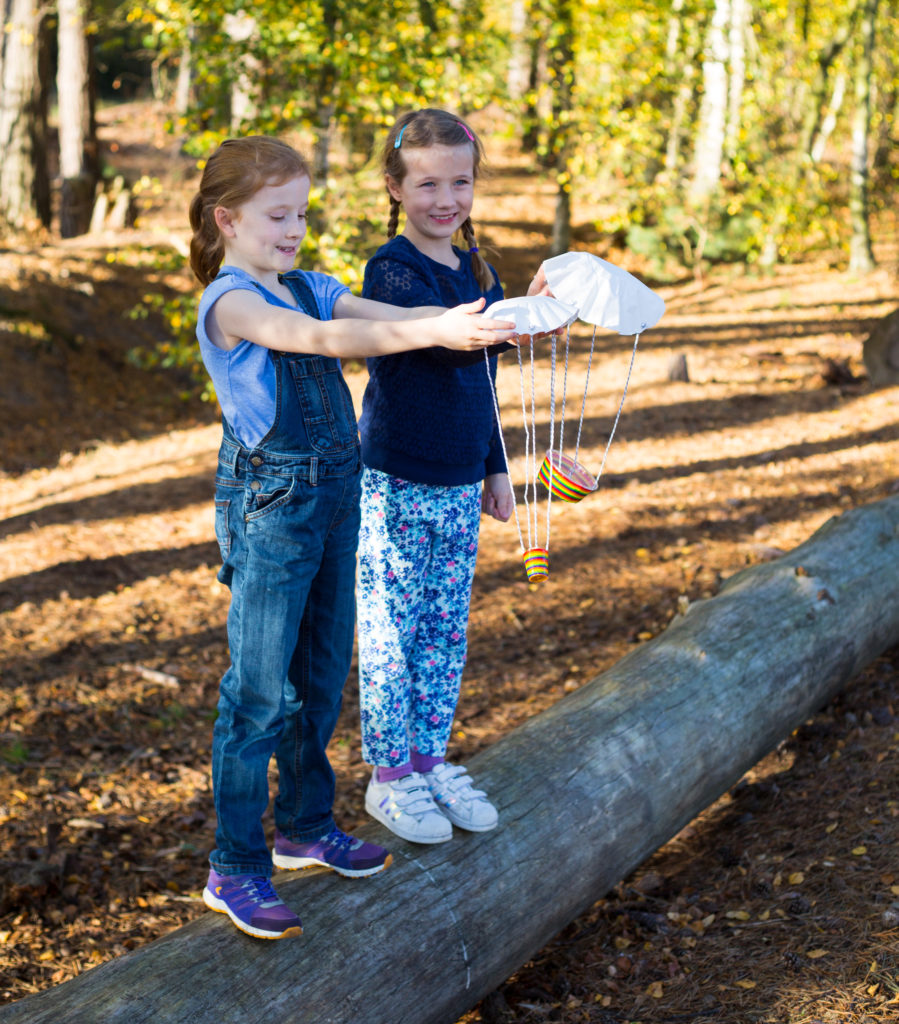
If you liked this science experiment you’ll LOVE my book This IS Rocket Science, which has 70 space themed science experiments for kids!
This post was originally published in 2011 and updated July 2019
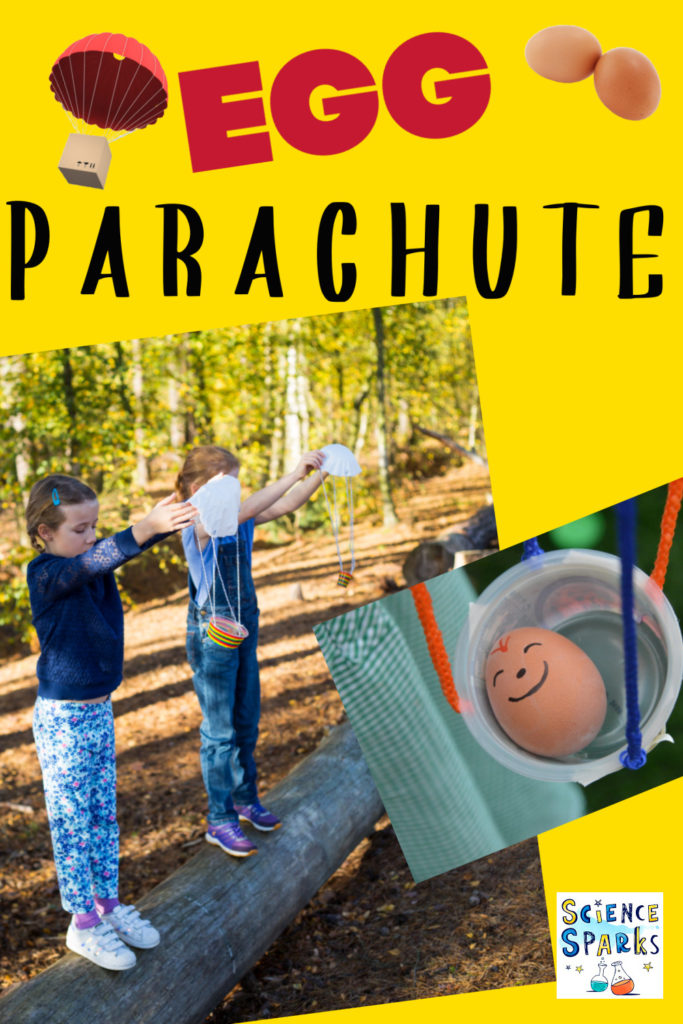
Last Updated on March 14, 2023 by Emma Vanstone

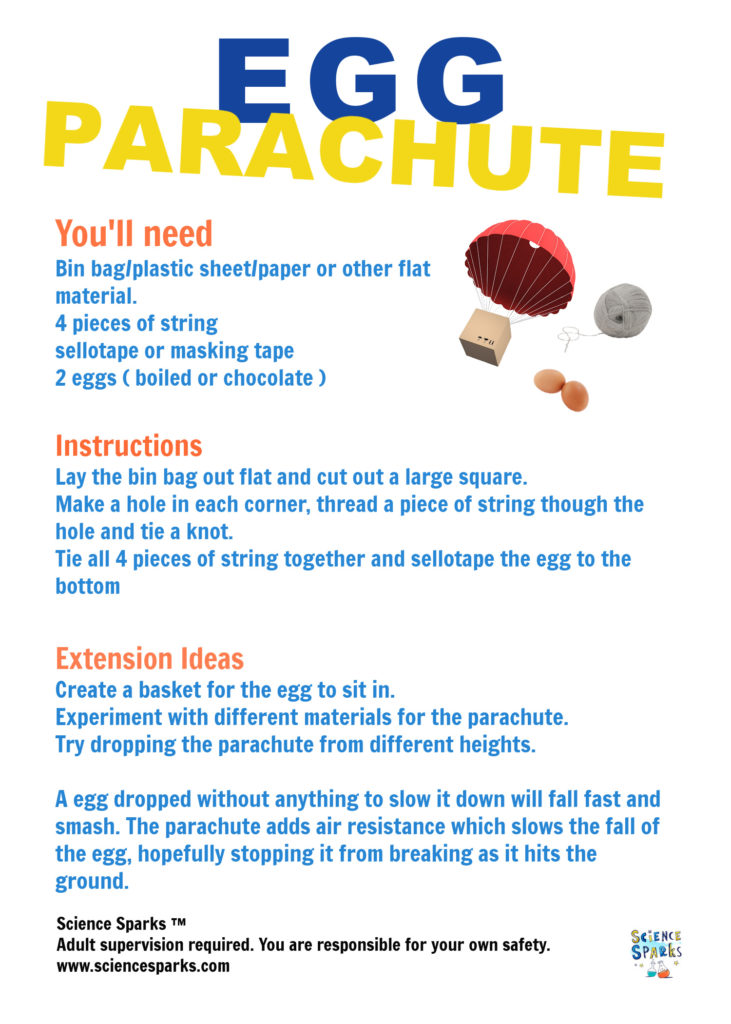
Fab. Really well explained!
Thank you. xx
cool video but it didn’t answer my question
You always make science fun!
Thank you, we do try!
That is cool. Did the egg break when you did that? Nevermind I saw the answer when I reread it.
THanks for linking up this week!
Thank you for hosting such a great link up. x
Love how you make science fun and bring it into the home… Did you know I did Physics A-Levels? Well, this will come in handy with my kids! 🙂
Thanks for sharing on Kids Get Crafty!
Maggy
This website is very good in my school all the year 5 used it to make a paacute for there topic ‘Wacky races’ thank you for making it